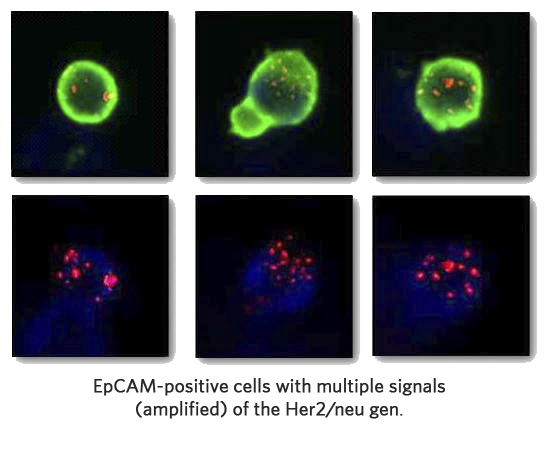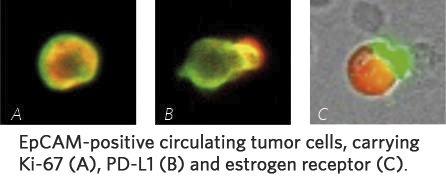A therapy decision should be tailored to the individual patient and their cancer as far as possible. Certain substances (targeted tumor therapies) only prove useful, however, if the tumor exhibits certain properties. Breast cancer patients, for example, can receive a treatment with special antibodies, if they are HER2/neu positive. As such, testing on tumor tissue or the primary tumor is already considered routine in modern-day therapy planning. maintrac® can determine therapy-relevant properties through testing carried out directly on the circulating tumor cells in the blood. In this way, maintrac® can help in finding a suitable therapy type, even in situations where the primary tumor has already been surgically removed, or the tumor is inaccessible.
On average, tumor cells have a high rate cell division. During these cell-division cycles, they often change their properties. Surface-properties as well as gene expression or cell DNA within the tumor cells can be affected by these changes. The responsiveness of the tumor cells to the therapy approach used can be affected by these modifications, often meaning that regular maintrac® testing of these properties can have a positive influence on treatment success rate.
In cases of "cancer with unknown primary tumor" various different tests are normally used (e.g. biopsies) to test metastases in order to determine the origin of the primary tumor. Nevertheless, metastases can often be difficult to reach. They do, however, often release cells into the blood, just like the associated primary tumor. The "fluid-biopsy" which examines these cells as part of the maintrac® analysis, contributes to an identification of the primary tumor by determining certain properties of the circulating tumor cells.



